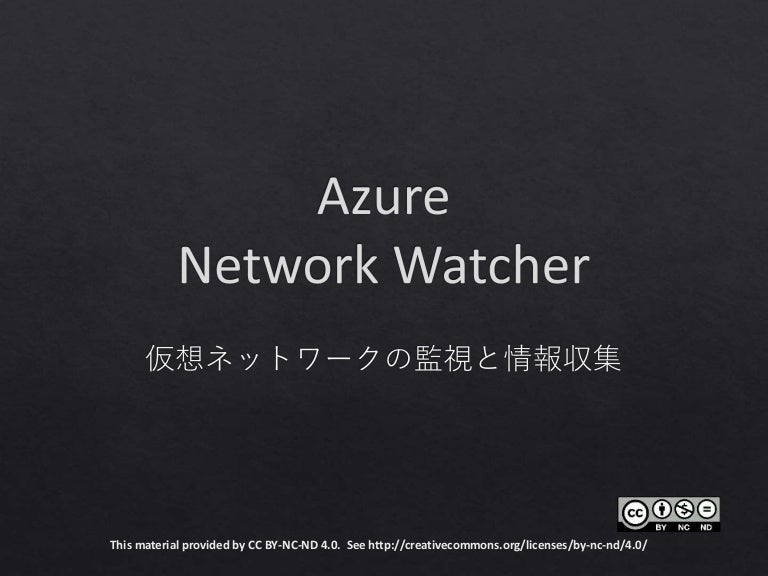
Diagnostic logs: As mentioned in scenario monitoring, logs can be gathered and viewed in solutions such as PowerBI and Log Analytics.You can trigger alerts based on a pre-set threshold. Metrics: At the moment, only the Application Gateway is capable of metrics monitoring.You can track what changes were made, by whom, and when.

This will help to solve the issues and to identify those that continue to occur. Once you have identified a resource that is causing concern, you will want to monitor it closely. Using Azure Network Watcher - IP Flow Verify Resource Monitoring These logs can also be used in Azure Analytics, PowerBI, a range of third-party tools, or open source tools. Configuring diagnostics log: You get a single interface that allows you to manage and view diagnostics logging for every load balancer, network security group, route, and application gateway.This tool gives you a summary of the quantities of each resource type that is deployed versus the subscription limits. They will want an easy way to view how many of the available, per-subscription, network resources they can still deploy. Network subscription limits: While most of us will never care about this, larger customers will care.We can retrieve logs to get the health of a VPN gateway and its connections. Virtual network gateway and connection troubleshooting: We have not had a way to troubleshoot ARM-only deployments of the gateway, such as suCSP subscriptions, until now.NSG flow logging: You can view a log of ingress and egress traffic passing through a network security group on a per-rule basis.This feature shows you applied and effective rules. Security group view: I have seen how people can get lost in network security groups.The next hop from a machine to an address, if present, can be identified. Next hop allows you to figure out why traffic is being routed to a black hole. Next hop: User defined routing can be tricky.You can also identify which network security group rule has blocked the traffic. Using IP flow verify, you can test the flow of traffic to a specific machine. IP flow verify: Security can be complex.This can also automatically trigger a capture after an alert. You can selectively capture packets that meet certain criteria for a limited amount of time. This is useful for analysis, intrusion detection, performance monitoring, and more. Variable packet capture: This powerful feature allows you to capture packets as they enter or leave a virtual machine.The PowerShell method returns a JSON of all the objects and the resources that are contained within or connected to them. At this time, the graphical view is limited to resources in the same resource group. Topology: You can view how network resources are connected together.There are eight functions available to us: If you have a problem that is hard to track down, then you will probably start your investigations using scenario monitoring. Viewing the Network Topology of a Small Deployment Scenario Monitoring We can also troubleshoot and resource health from a given resource. Resource: In this level, we can retrieve diagnostic logs and metrics.An example of this is being able to figure out why a packet cannot reach a destination from a given source. Scenario: This level is end-to-end monitoring of a solution.Network Watcher provides us with network monitoring at two levels:

It also will be rolled out to more regions over time. It is available in US West Central, US North Central, and US West. Microsoft recently launched a public preview of Network Watcher. We need more than just ping and trace-route to figure out where those problems reside.


 0 kommentar(er)
0 kommentar(er)
